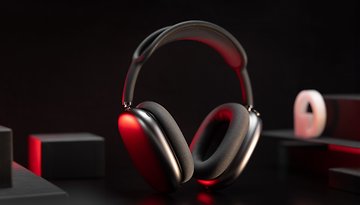Opinion | Beaten by a Dead Brand: LG Gets Android 13 Before Motorola


This past week, defunct mobile manufacturer LG started rolling out the Android 13 to its (charmingly) weird Wing smartphone. A 30-month-old device running Google’s OS latest version is nothing new, Google, Samsung, Oppo, OnePlus, and a few others have done the same. But one brand managed to be left behind the Korean (ex)manufacturer: Motorola.
Truth be told, the Wing Android 13 update is currently rolling out only in its native South Korea. Luckily enough, NextPit had not only one, but two sample units in the office, and one was running the Korean ROM, so we blazed through almost a dozen updates to get it updated—since it was running Android 11.

But contrary to what we could expect from a company who quit the market 24 months ago, the Wing still feels like a fresh device, with stable performance and a coherent interface—even though practically indistinguishable from its original Android 10 release.
Risen from the dead
When LG originally promised to update some devices to Android 12 and 13, we were skeptical. Two years later, not only the South Koreans delivered on their promise, they left behind companies still on the market…
Namely, Motorola, which has yet to update a single device to Android 13. It could be worse I guess, at least new releases like the Moto Edge+ (2023) tested by NextPit are coming with the new version. But there are no firm promises of when its predecessors will receive the update.

And if you bought the original Motorola Edge Plus—launched just a few months before the Wing—forget about it, the old flagship won’t receive Android 13.
“Pure Android”
In the past, phone brands blamed their customizations for not updating their phones in a timely manner. By the time Google bought Motorola Mobility, one of the first casualties was the Moto Blur skin, and, coincidence or not, Motorola phones started to have fast and frequent updates, as this ArsTechnica article illustrated in 2014.
Google then sold the legendary subsidiary to Lenovo and, almost 9 years later, the brand still touts its “Pure Android” experience but doesn’t seem to take updates as seriously as before, with not only fewer updates than its rivals but also—as its Android 13 rollout is showing—months later.
Motorola actually went back to adding features over stock Android, including value-added things like Ready For and the security-focused ThinkShield. But that didn’t stop Samsung to updating basically all of its supported devices to Android 13, despite having its own equivalent Dex and Knox ecosystems on top of a heavily modified One UI skin.
A lost opportunity

Lenovo missed a pretty good opportunity with its enterprise-focused ThinkPhone—or “Lenovo ThinkPhone by Motorola”. Promising three Android updates and four years of security fixes is better than its usual policy, but still lags behind what Oppo, OnePlus, and Samsung offer to their flagships, and in the latter’s case even mid-range models half the price of the ThinkPhone.
Motorola under Lenovo ownership still makes exciting devices, such as the ThinkPhone mentioned before, or its ongoing Razr range. But after all these years, hoping for a competitive update policy like in the Google days is looking increasingly like a lost cause.
As for LG, while its smartphone brand may have died in 2021, the company is still going strong with its electronic, home appliance, and computer lines for the consumer market, and also its wide range of offerings in the display, battery, imaging, and other component categories.
What about you? Do you still have hopes for a resurgent Motorola? The brand is still incredibly strong in my native Brazil, and also in the US, with frequent new releases. But do you think an improved update policy could change its fortunes globally? Share your opinions in the comments below!


















Even if they change their update speed now, i still won't be buying a Motorola device again. I also thought stock Android will mean the updates will be faster on Motorola. I was so wrong. Now, i would rather buy a samsung smartphone!